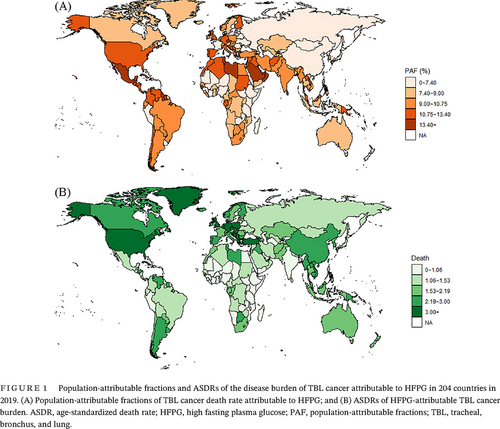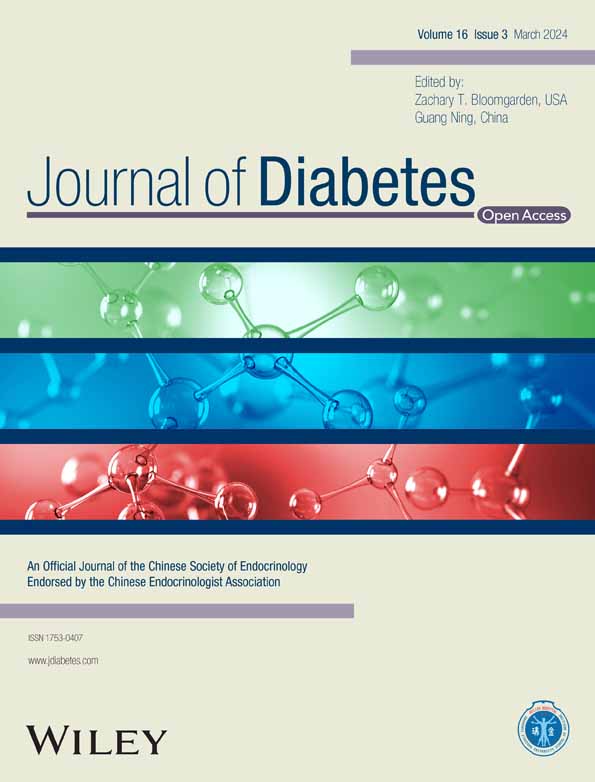Global, regional, and national burden of tracheal, bronchus, and lung cancers attributable to high fasting plasma glucose: A systematic analysis of global burden of disease 2019
Zhi-Jie Zheng is the senior author.
Abstract
Background
Tracheal, bronchus, and lung (TBL) cancer is the third most common and lethal type of cancer worldwide. Glucose metabolism disorders, as represented by high fasting plasma glucose (HFPG), increase the risk of development and worsen the prognosis of TBL cancer. This study aimed to evaluate the global disease burden of TBL cancer attributable to HFPG.
Methods
The TBL cancer burden attributable to HFPG was estimated based on a modeling strategy using the Global Burden of Disease Study 2019. The disease burden globally and by regions, countries, development levels, age groups, and sexes were also evaluated with the indicators of death, disability-adjusted life years, years of life lost, and years lived with disability. The estimated annual percentage change (EAPC) was calculated by regression model to show the temporal trend.
Results
In 2019, approximately 8% of the total TBL cancer burden was attributable to HFPG. The HFPG-attributable TBL cancer burden increased globally from 1990 to 2019 with the EAPC of 0.98% per year. The burden was positively associated with social development levels, and the global burden was three times greater in men than in women. HFPG-attributable TBL cancer burden increased with age and peaked at above 70 years of age.
Conclusions
The findings highlight the effect and burden of glucose disorders, as represented by HFPG on TBL cancer burden. Integrated cancer prevention and control measures are needed, with control of glucose disorders as one of the key elements.
Open Research
DATA AVAILABILITY STATEMENT
The datasets generated and/or analyzed during the current study are available in the Global Health Data Exchange (http://ghdx.healthdata.org).





